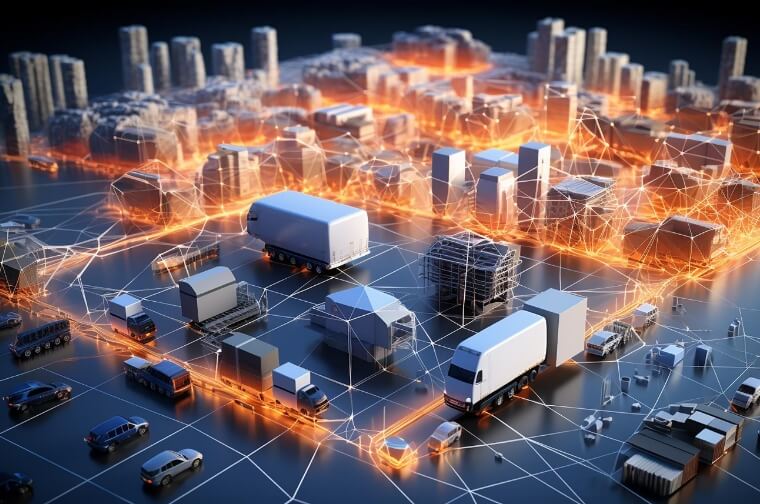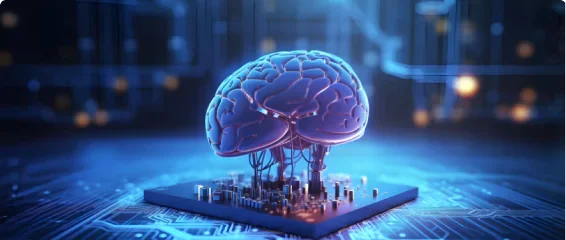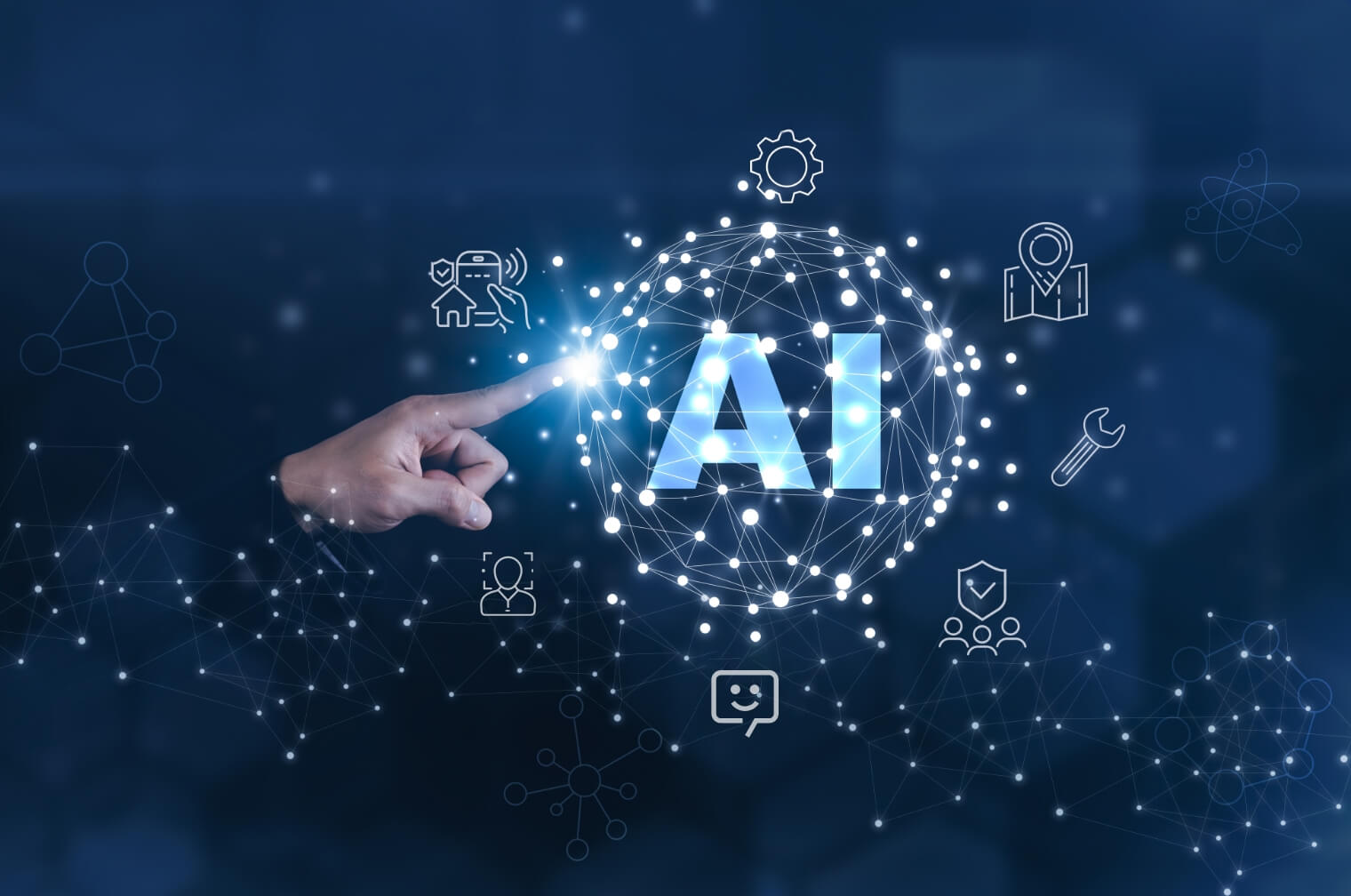Machine Learning and AI for revolution of Tech Companies are changing and streamlining businesses.
Transportation has always played a vital role in shaping societies and economies from the earliest days.
However, as we look towards the future, the transportation industry is on the verge of a technological revolution.
AI transportation Solution is the driving force behind this transformation, with the AI transport industry set to redefine the way we move and connect.
Autonomous vehicles: redefining mobility
Autonomous vehicles, often referred to as self-driving cars, are ready to improve the way we move from point A to point B.
These vehicles, equipped with artificial intelligence, sensors, and powerful algorithms, can drive themselves with minimal human intervention.
| Challenges | Solutions |
|---|---|
| Regulations | Improved Safety |
| Public Trust | Reduced Accidents |
| Ethical Consideration | Enhanced Accessibility |
Benefits of AI in transportation
AI (Artificial Intelligence) is offering numerous benefits that are reshaping the way we move people and goods.
Here are five benefits:
- Improved Safety: AI plays a pivotal role in enhancing safety on our roads.
- Advanced driver-assistance systems (ADAS) powered by AI can detect potential collisions, assist with lane-keeping, and even facilitate autonomous driving.
- Efficient Traffic Management: AI-driven traffic management systems are making our road networks more efficient.
- AI algorithms analyze traffic patterns and adjust signal timings in real-time to reduce congestion.
- Enhanced Predictive Maintenance: It can predict when maintenance is needed, preventing breakdowns and ensuring vehicles are in optimal working condition.
- This predictive maintenance reduces downtime, increases vehicle lifespan, and lowers operational costs.
- Optimized Logistics and Supply Chain: Route optimization, load planning, and demand forecasting are made more efficient with AI.
- Companies can deliver goods faster and with less environmental impact, as AI helps in optimizing delivery routes and schedules.
- Eco-Friendly Transportation: Electric and autonomous vehicles, which often rely on AI for navigation and decision-making, are reducing the carbon footprint of transportation.
- AI can also encourage the adoption of ride-sharing and public transit, further reducing emissions.
Smart infrastructure and traffic management
Smart infrastructure takes traffic management to the next level, bringing benefits for both urban planners and commuters.
Here’s what makes Smart Transportation and AI an important element in modern traffic management:
- Smart infrastructure, equipped with advanced technologies and AI, combines the power of real-time data analysis and predictive modeling to reshape our daily commutes.
- It enables real-time traffic analysis, allowing authorities to predict traffic patterns, identify congestion points, and optimize traffic signals. This data-driven approach ensures a smoother, more efficient flow of vehicles on the road.
- By reducing congestion and optimizing routes, it minimizes vehicle idling, subsequently decreasing emissions and promoting eco-friendly transportation practices.
- Cities like Singapore, Amsterdam, and Barcelona are embracing smart traffic management systems, resulting in less environmental impact by reducing emissions and promoting eco-friendly practices.
Artificial intelligence in transportation is not just about efficiency, but it’s a significant step toward greener and healthier urban development.
Logistics and supply chain optimization
Artificial intelligence has found a home in logistics and supply chain management.
- Efficient Routes and Reduced Costs: AI algorithms calculate the most efficient routes for shipping, reducing transportation costs and ensuring goods reach their destination swiftly.
- Predictive Analytics: AI-driven predictive analytics are indispensable in inventory management, accurately forecasting demand and optimizing stock levels.
- Sustainability in Logistics: Embracing green transportation initiatives powered by AI helps in reducing the carbon footprint. This environmentally responsible approach aligns with modern expectations of businesses to operate in an ecologically friendly manner.
The integration of AI is a necessity in the dynamic world of logistics and supply chain management.
Public transportation 2.0: enhancing commuter experience
Public transportation is getting a much-needed upgrade through AI solutions.
- AI transportation solution in public transportation are changing the game by predicting ridership patterns and optimizing schedules, making the daily commute more efficient and convenient.
- The user experience has been vastly improved with real-time updates, digital ticketing, and personalized services tailored to individual preferences.
- Beyond convenience, there are significant environmental benefits as AI-driven public transportation initiatives are encouraging more people to choose buses and trains over individual cars, ultimately reducing carbon footprints.
- These enhancements of Artificial Intelligence transportation solution have a profound social impact, especially for differently abled individuals and seniors who now have greater accessibility and ease of use, ensuring that public transportation truly serves everyone in the community.
Future challenges and ethical considerations
As AI reshapes the transportation landscape, ethical considerations and challenges emerge. Privacy concerns arise as vast amounts of personal data are collected for various transportation solutions, requiring a careful balance between convenience and privacy.
There are also fears of job displacement as automation and AI threaten traditional roles, raising questions about the impact on the workforce.
Different countries have varying sets of rules, and ensuring consistency and adherence across borders is no small task.
Establishing a sticking framework that governs the operation and safety standards for autonomous vehicles globally is essential
Governments and international organizations play a vital role in shaping the future of transportation.
They are responsible for drafting and implementing the regulatory frameworks that will define the rules of the road for AI-driven transportation systems.
By collaboration and setting ethical guidelines, they can ensure that technology evolves in a safe, reliable, and efficient manner, paving the way for a transportation landscape that benefits all.
Conclusion
AI transportation Solution is not just about making our commutes easier; it’s about creating a future that is more sustainable, efficient, and inclusive.
To harness the full potential of AI in transportation, continued research, innovation, and collaboration is imperative. Together, we can build a brighter and more connected world.
Frequently asked questions
How is AI changing transportation?
AI is revolutionizing transportation by enabling the development of autonomous vehicles, optimizing traffic management systems, enhancing safety measures, and improving overall efficiency.
How is AI used in transportation?
AI transportation solution are used through autonomous vehicles, traffic management systems, and predictive maintenance to prevent breakdowns and enhance reliability.
How does AI enable autonomous vehicles?
AI enables autonomous vehicles by using sensors, cameras, and machine learning algorithms to perceive and interpret the environment, make decisions, and navigate without human intervention.
What are some examples of AI transportation solutions that are currently in use?
Some of examples of AI transportation solutions are Self-driving cars and trucks, Traffic management systems, Vehicle maintenance and diagnostics, Fleet management, and public transportation:
How can AI transportation solution help transportation industries?
Artificial Intelligence transportation solutions can help the transportation industry improve efficiency, reduce costs, and enhance safety.









